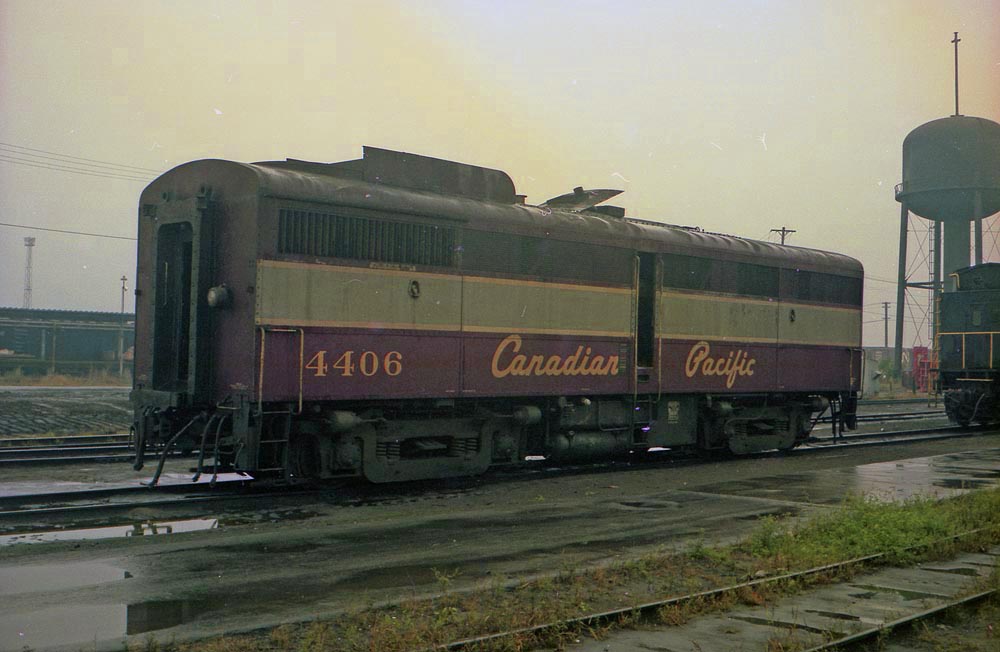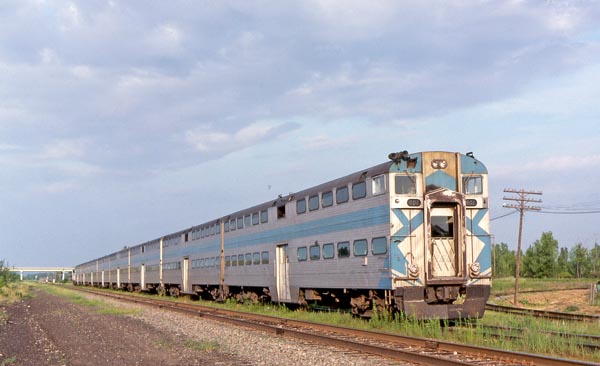

|
While working in the Power
Bureau in CP's Windsor Station in Montreal, two of the mechanical guys
loved telling the story about Ken Jones, a crackerjack electrician.
A 4400-series MLW/AIco FB unit was forever having ground relays, but it was always out on the road. When it got to the shop track, it performed admirably. Ken Jones was put on this thing at St. Luc shop track, and told to stay with it until he found the problem. Hostler J.C. Labelle was in working the controls of this thing, with his head out the little port-hole window, making sure that nothing was going to get in the way. It was at night, and they had the little light on the end of the unit lit. They went back and forth between the coal chute and the shop several times, with no success. Finally, J.C. got the unit going at a respectable speed after leaving the coal chute, and finally Ken hollered to him: "I've found the trouble, stop the unit!" J.C. applied the brakes, but the brake shoes had worn out, and the unit wouldn't stop. Fortunately the shop door for the track that they were on was open - this track led right into the wall of the shop planner's office, who fortunately was in the washroom. The unit hit the wall so hard that every clock in the St. Luc diesel shop building supposedly stopped at exactly the same second. Ken and J.C. in the unit were not too badly shaken up, but the 4400 had to go to Angus for some drawbar repairs, amongst other things attributed to a 'heavy coupling'.  Control cab 901 at Rigaud on 21 July 1989. Ross Harrison photograph. Ken Jones also has a star beside his name in the mechanical department for something else. When the CP double deck commuter cars were being built by Canadian Vickers in the late-1960s, they were having a merry time getting the diesel locomotive to MU with the cab control cars 900 and 901. Every Tom, Dick and Harry from CP's mechanical department was over at the Canadian Vickers plant to figure out what was wrong, as to why they weren't "talking" to each other. Everybody threw up their hands and didn't know what to do. The cars were ready for service, except for this problem. One of the very higher-ups in the Chief of Motive Power and Rolling Stock's office was talking to somebody in St. Luc shop, and they were told that if Ken Jones couldn't fix it, nobody could, so he was sent over there, and in 15 minutes he had figured out what the problem was. He was also not known to help younger guys along - when they'd ask for help, it was all a big secret. The CMP&RS guys at Canadian Vickers apparently weren't told what Ken did to get this stuff working. Another time. Ken, his wife and kids were driving into Montreal on Highway 2/20, and he saw a CP train stopped out in the middle of nowhere around Beaconsfield, Quebec. He stopped the car, walked across the highway, and the engineer told him what was wrong - a contactor was messed up. Ken decided to hold this contactor in to get the train into St. Luc. He waved to his wife to drive to St. Luc, and she picked him up there a while later. Another night, while working the Prairie desk, I heard that #41, "The Atlantic Limited", was sitting at Brownville Junction, Maine, with the E8 not loading up. Ken had the shop guy there put a copper penny into a contactor which would cause the unit to load properly, and Ken would put in a report to St. Luc shop to have this contactor repaired upon arrival later in the morning. The transportation character working the east board said to Ken Jones: "Would that be a Canadian copper penny, or an American one.....?" Ah, the good old daze! Bytown
Railway Society,
Branchline, April 2007, page 16. |
![]()